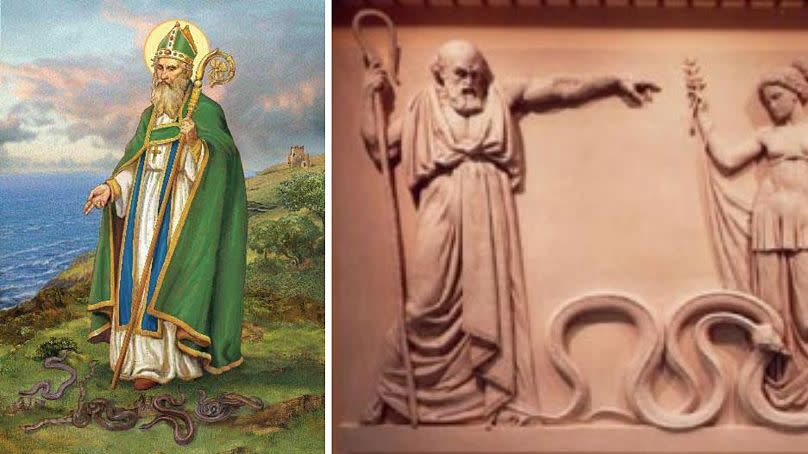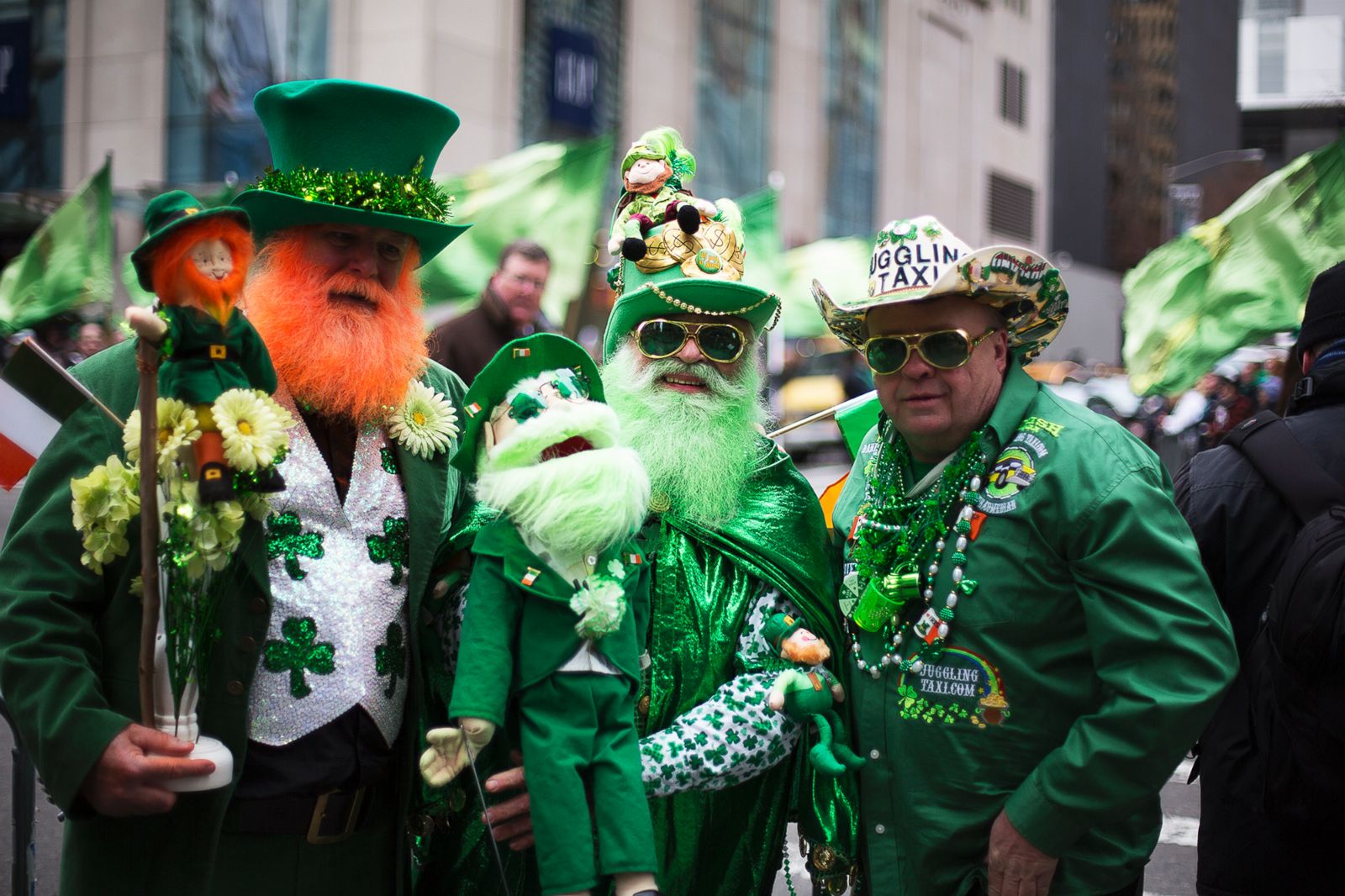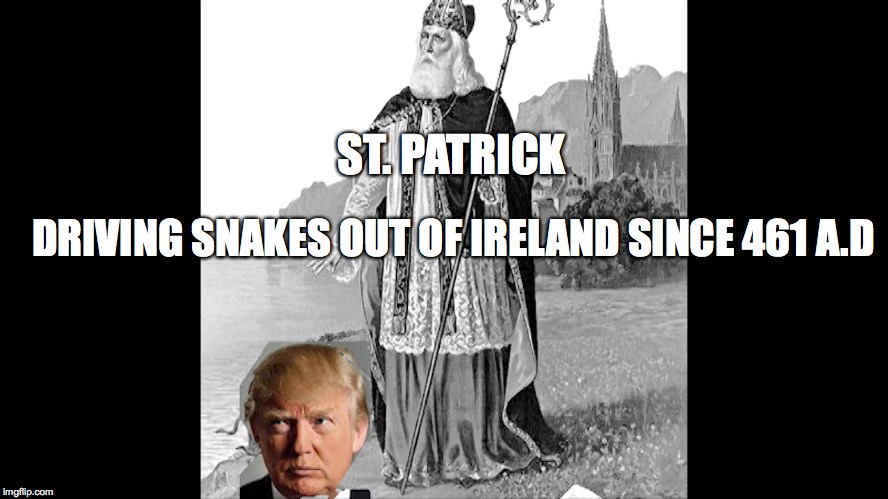Gallery
Photos from events, contest for the best costume, videos from master classes.
 |  |
 |  |
 |  |
 |  |
 |  |
 |  |
Perhaps the most widely known miracle attributed to St. Patrick is his banishment of all snakes from Ireland. According to legend chronicled by Jocelyn of Furness, a 12th-century British monk, venomous snakes attacked St. Patrick while he was undertaking a 40-day fast on top of a hill. St Patrick and the snakes. Where does the legend about St Patrick and the snakes come from, then? Snakes are generally associated with the devil in Christianity due to the tale of Adam and Eve, so perhaps it was a way of driving home how Patrick was Ireland's savior as he brought Christianity to its shores. The legend of St. Patrick ridding Ireland of snakes in the 5th century is a fascinating tale enticing both foreigners and residents. During an attempt to fast for 40 days, the saint was attacked by a group of snakes. St. Patrick’s Day Was Once a Dry Holiday: In Ireland, St. Patrick’s Day was once a religious observance, and pubs were required by law to stay closed. It wasn’t until the 1970s that alcohol was allowed to be served on the holiday. St. Patrick's Day's spiritual meaning is rooted in Christianity. At its core, St. Patrick's Day is a religious holiday celebrated by Catholic, Lutheran, Anglican, and Eastern Orthodox Christians.. The man who inspired the holiday, Saint Patrick, is best known for bringing Christianity to Ireland in the 5th century. The Saint and the Serpents: Unraveling the Legend of St. Patrick and the Snakes. The saint most famously associated with driving snakes out of Ireland is St. Patrick.Legend claims he banished all serpents from the Emerald Isle, chasing them into the sea after they attacked him during a 40-day fast. St. Patrick’s Day offers a spiritual nudge to reflect on where we’re headed and what we’re being called to do. Taking Action on St. Patrick’s Day. Beyond the parades and parties, one way to honor the spiritual essence of St. Patrick’s Day is through intentional action. Reflect on your life, your own challenges, and how you’ve grown. St Patrick's Breastplate Prayer. Aside from this and St. Patrick's Day itself, St. Patrick's legacy is sustained by his famous prayer of protection or breastplate prayer. The prayer is long, but the encouragement still speaks the same message to this day. Here is a small excerpt of the prayer: St. Patrick’s Day, celebrated on March 17 each year, is known for its parades, shamrocks, and a whole lot of green. It’s a day when people around the world embrace Irish culture — whether they have Irish heritage or not. But behind all the revelry, St. Patrick’s Day has a deep and fascinating history that goes far beyond the modern celebrations. Some of the traditions we associate with The red-haired, green-clothed Leprechaun is commonly associated with St. Patrick’s Day. The original Irish name for these figures of folklore is “lobaircin,” meaning “small-bodied fellow.” St. Patrick’s Day is celebrated on March 17th each year. Is St. Patrick’s Day always on March 17th? Yes, St. Patrick’s Day is always March 17th. What is the meaning behind St. Patrick’s Day? St. Patrick’s Day celebrates the life and legacy of St. Patrick, the patron saint of Ireland, who played a critical role in spreading The snake has always represented transformation, healing, and rebirth—even in ancient Irish myth. To drive out the snake was to drive out fear, superstition, and tribalism—and replace it with a faith built on unity, renewal, and grace. St. Patrick’s myth is not about biology—it’s about symbolism that outlasts bone and skin. St. Patrick's Day Jeopardy No teams 1 team 2 teams 3 teams 4 teams 5 teams 6 teams 7 teams 8 teams 9 teams 10 teams Custom Press F11 Select menu option View > Enter Fullscreen for full-screen mode Whether you credit him with banishing snakes, bringing Christianity or giving us a bank holiday weekend, St Patrick's Day is undoubtedly an excellent chance to celebrate our small country. 3. A possible St. Patrick snakes meaning. The most widely accepted St. Patrick snakes meaning is that is all comes back to how the devil is depicted in the Bible as a snake. It’s believed that the snakes in Ireland were in fact pagan beliefs. More on this below. The story behind St. Patrick banishing snakes from Ireland It’s a story that has been passed down through generations, becoming an integral part of Irish identity and celebrated annually on St. Patrick’s Day. Frequently Asked Questions (FAQs) About St. Patrick and the Snakes 1. Was St. Patrick Irish? Actually, no. St. Patrick was born in Roman Britain, likely in Scotland. However, as captivating as this story may be, it’s essential to delve deeper into history and science to unravel the myth surrounding St. Patrick and snakes. The legend goes that during a 40-day fast on top of a hill, St. Patrick was attacked by snakes. In response, he chased all of them into the sea, freeing Ireland from these slithering The first St. Patrick's Day Parade actually took place in Boston, Massachusetts, back in 1737; the city is known for its high percentage of residents who claim an Irish ancestry. However, some modern Pagans refuse to observe a day which honors the elimination of an old religion in favor of a new one. Some Pagans feel that St. Patrick’s Day co-opts the energy of this sacred time, replacing its original meaning with a Christian narrative and commercialized festivities. The contrast between the profound spiritual significance of Ostara and the often-superficial celebrations of St. Patrick’s Day can be deeply offensive to those who honor Saint Patrick Banishes Snakes from Ireland. The Legend states that Saint Patrick was undertaking a 40-day fast on top of a mountain in Ireland, when he was attacked by snakes. Using his staff Saint Patrick banished all the snakes in Ireland into the sea, and from that day Ireland was a land that was free of snakes. This Legend seems to draw on
Articles and news, personal stories, interviews with experts.
Photos from events, contest for the best costume, videos from master classes.
 |  |
 |  |
 |  |
 |  |
 |  |
 |  |